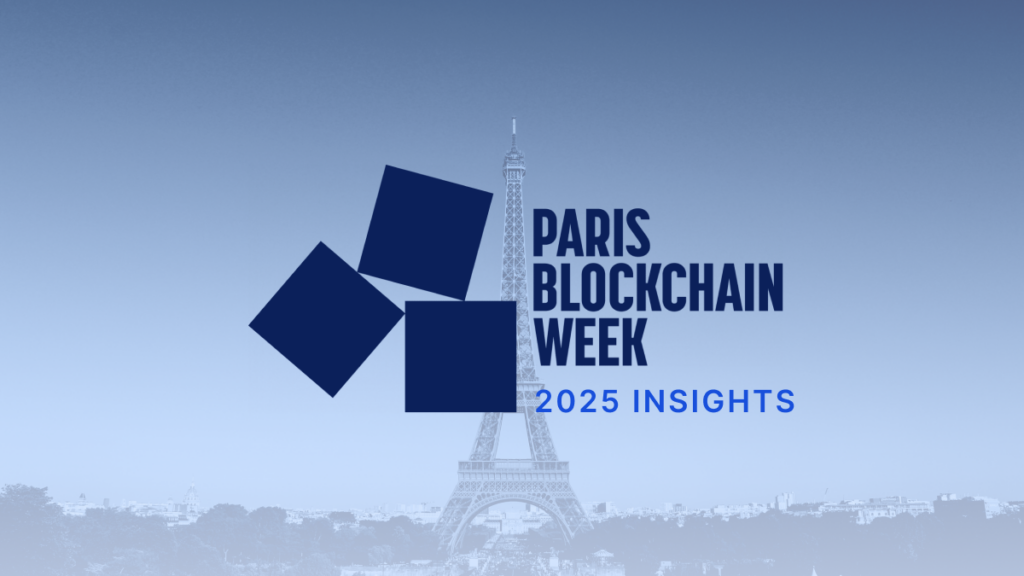I’ve returned from my fourth Paris Blockchain Week (PBW) with Fireblocks, which gives us a great opportunity to see how far we’ve come in the digital asset space. No longer a space for curious exploration, PBW is where we talk about implementation for mainstream adoption that’s happening today. And much like the industry, I’ve seen my own growth over the past five years at Fireblocks!
Look at How Far We’ve Come
2022 was all about foundational conversations:
- NFTs, the metaverse, and digital governance dominated the stage.
- Enterprises were exploring proof-of-concepts and speculative use cases. Maybe you were one of those early pioneers working in an isolated innovation lab?
In 2023, we shifted to implementation and scalability:
- Digital asset custody, tokenization, and DeFi gained prominence.
- The NFT craze had cooled as attention shifted to real-world financial applications, like French corporates opting for self-treasury management in the context of holding crypto for payments or to fund smart contracts operations.
Institutional adoption took center stage in 2024:
- We spoke about tokenizing real-world assets, digital payments, and central bank digital currencies.
- Enterprises weren’t just ideating; they were executing. Tangible applications emerged in areas like real estate tokenization, supply chain finance, and loyalty programs.
- Everyone was realizing that their blockchain infrastructure was an important strategic choice. Like Flowdesk, the market maker who built on the Fireblocks Network to connect and trade with thousands of liquidity partners, trading venues, and counterparties around the globe.
2025: Maturity in the Digital Asset Landscape
Today, we are witnessing a fully-fledged transition to a mature digital asset ecosystem. PBW 2025 was all about scalable, revenue-generating use cases. Companies are integrating digital assets into treasury operations, launching tokenized financial instruments, and creating new monetization models around user engagement.
A major theme at the 2025 PBW was tokenization. It has expanded far beyond NFTs to cover tokenized securities, ETFs, bonds, commodities, and even carbon credits.
Other big discussions happened around market infrastructure, regulatory compliance, and secondary market liquidity. This makes sense: these are real concerns in a market that is actively trading and transacting across tokenized asset classes.
In the payments domain, stablecoins are revolutionizing cross-border settlements. The panel at our SVP of Payments and Network Goldi’s session was unanimous: banks and payment service providers perceive stablecoins not as crypto-adjacent tools but as core components of modern payment rails. As Sheraz Shere, Solana’s head of payments and commerce also told Goldi, interest and activity around stablecoins has really ramped up these past few months as regulatory frameworks take shape.
We’re also seeing more luxury brands leverage tokenization to redefine engagement, authentication, and exclusivity through digital collectibles and loyalty tokens.
PBW has become an industry institution, and digital assets are becoming mainstream.
A Note on the French
I’m not just saying this because I’m French: within the European Union, France has emerged as a champion for digital assets and for tokenization.
The French authorities were engaged in PBW 2025 in full force, explicitly signalling support for some mission-critical policy enablers that RWA tokenization needs:
- on-chain payment instruments like stablecoins and a blockchain-based wholesale digital euro;
- fully integrating blockchains in post-trade settlement
- resisting punitive regulatory treatment of permissionless ledgers
One big signal from the public sector was the focus on liquidity. In other words, industry needs to step up and demonstrate supply and demand for tokenized assets in order for these regulatory hurdles to be removed.
France also expects a boom in MiCA licenses, despite it being slower than other EU countries to issue them. Managing cyber risk, we were told, is THE barrier to clear in many of the pending applications.
The Future of Finance: Collaborative Pathways
I anticipate that at next year’s PBW, collaboration will be a key theme. Seamless integration between traditional and digital finance, interoperable systems, and shared standards are essential to unlocking the full potential of tokenized economies.
The evolution of Paris Blockchain Week from 2022 to 2025 marks a clear and inspiring trajectory. Digital assets have moved from theory to practice, from sandbox to strategy. Today, Fireblocks is at the heart of discussions around demand for secure, scalable infrastructure. Traditional banks, asset managers, and fintechs talk with us about building with purpose—and urgency.
“We’re committed to enabling this future—delivering the secure rails and tools that empower institutions to operate confidently, compliantly, and at scale. There’s nothing more exciting than both building and experiencing the future of finance firsthand. Just imagine the progress we’ll unveil from the Carrousel du Louvre at PBW 2026!



